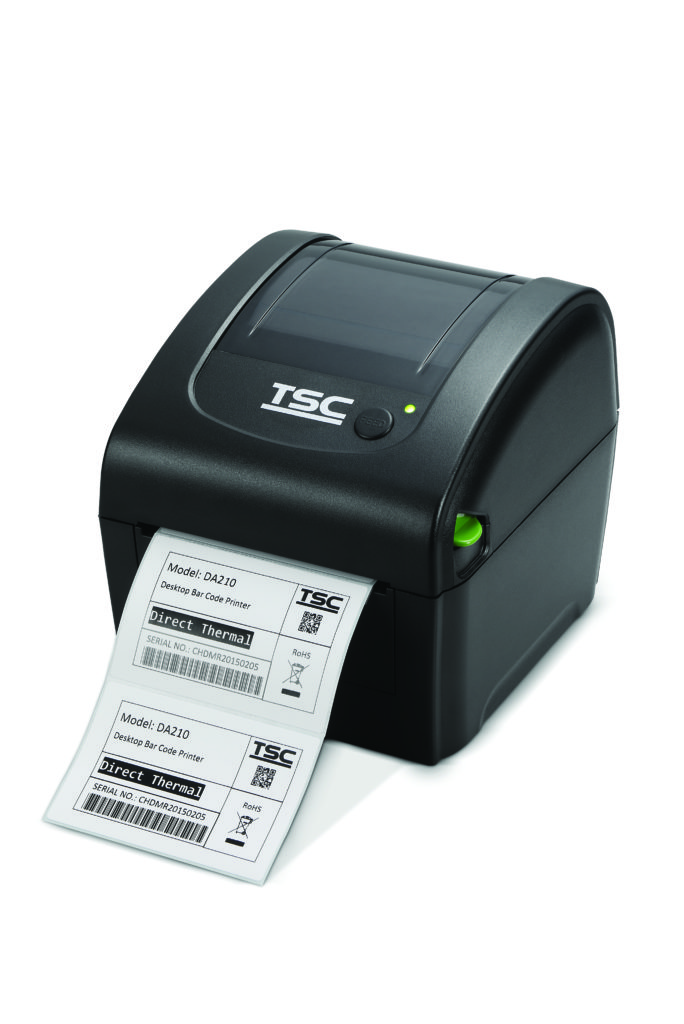Flexible Marking and Labelling Available with TSC Auto ID Series
4th May 2018

TSC Auto ID has launched its DA210/DA220 series of four powerful direct thermal printers for professional barcode label printing. The compact desktop models are extremely flexible and can be used for product marking, labelling at the point of sale, shipping and receiving or entertainment and transportation ticketing. Their outstanding performance characteristics, says the company, include but are not limited to a wide variety of sensors and interfaces as well as an excellent print quality.
The DA210/DA220 series is extending the already diverse product range of TSC desktop printers with four strong models representing a convincing and competitive solution also through their good price-performance ration for diversified labelling requirements of the market.
The new series offers high print resolution of 203 and 300 dpi and fast print speeds up to 154.4 mm per second. The 60 Watts power supply generates printed labels in outstanding quality even at high printing speeds.
Customers have the choice to select four models. The DA210, DA220, DA310 and the DA320, perfectly designed for almost every need and application and handling up to 127 mm label rolls. Bar codes, logos and graphics are printed in excellent print quality.
The attractively priced printers DA210 and DA310 include all functions necessary for an easy label print via USB 2.0 or Bluetooth (factory op-tion). By contrast, the models DA220 and DA320 feature significantly higher communication options and memory capacities. They offer 128 MB Flash and 64 DRAM for easy storage of fonts, international character sets, logos and graphics.
A fully compatible set of standard industry emulations, including Line Mode, Eltron®, Zebra® and Datamax languages, makes it easy to re-place old installed hardware.
A centre-based large material bay allows easy and rapid loading. The spring-loaded label roll holder facilitates the instalment of the supplies. Top-of-form sensing – by gap, black mark or notch – as well as head-open sensor is standard.

